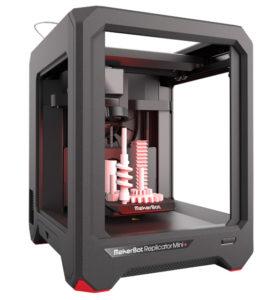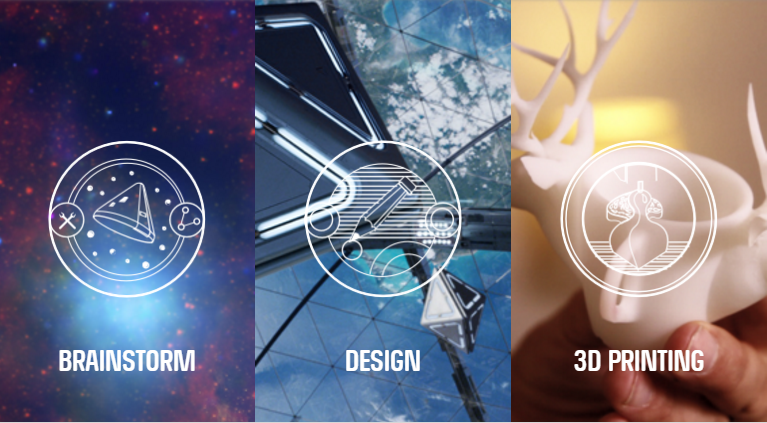Mars Medical Challenge Asks Students to Design 3D Printable Items to Keep Astronauts Healthy on Mars
The team of NASA, the American Society of Mechanical Engineering (ASME), and online educational platform Future Engineers has been a lot of fun to follow over the last year. Their collaborative 3D Printing in Space Challenges have resulted in some amazing, ingenious inventions from children as young as five years old, all aimed at improving the daily lives of astronauts now and in the future, on the International Space Station and, one day, on Mars.
The winners of the last challenge, the Think Outside the Box Challenge, were announced a few weeks ago, and now the three organizations have announced the fifth challenge in the series. This time, it’s geared directly towards a future Mars mission. The Mars Medical Challenge asks participants to create a digital 3D model of a medical or dental item that an astronaut could use on a three-year mission to Mars.
Designs should be for direct medical needs, such as first aid, diagnostic or preventative purposes, or emergency, surgical, or dental procedures. While things like exercise, nutrition, and psychological health are important, the guidelines state, they’re not areas of focus for this particular challenge.
“Research conducted by astronauts aboard the International Space Station educates our nation and world about the health challenges that astronauts face on prolonged missions,” said Deanne Bell, CEO and founder of Future Engineers. “As NASA continues to investigate how the human body adjusts to weightlessness, radiation and stress that occur on long duration spaceflight, Future Engineers is eager to engage students with a real-world space exploration challenge that focuses on health-related hardware and how a 3D printer can assist astronauts facing a medical scenario during a Mars mission.”
Entries are being accepted until January 25, 2017. Ten semifinalists each from the junior (ages 5-12) and teen (12-19) categories will be announced on February 28, then narrowed down to four finalists in each category on March 7. Those finalists will be interviewed on March 17, and the winners will be announced on March 28.
 The grand prize winners will each receive a trip to Houston and a tour of the NASA Johnson Space Center, where they will learn about space medicine, space exploration and Mars. The eight finalists will each receive a MakerBot Replicator Mini+ 3D printer for their school or educational institution, plus a set of GIANTmicrobes, which are delightful in my opinion. The semifinalists will all receive a Mars-themed prize pack.
The grand prize winners will each receive a trip to Houston and a tour of the NASA Johnson Space Center, where they will learn about space medicine, space exploration and Mars. The eight finalists will each receive a MakerBot Replicator Mini+ 3D printer for their school or educational institution, plus a set of GIANTmicrobes, which are delightful in my opinion. The semifinalists will all receive a Mars-themed prize pack.
Students can find video tutorials and other educational tools, including links to design software and brainstorming categories, on the challenge website. There are also tools for teachers to help with student registration and entry submission.
The 3D Printing in Space Challenges are part of NASA’s “make it, don’t take it” approach to space travel. The agency is currently working on the creation of an additive manufacturing facility to be built at the International Space Station, enabling astronauts to print what they need – spare parts, tools, etc. – rather than having to order them to be sent from Earth, which takes a lot of time, energy and money. Ultimately, they envision the future of space travel being driven by 3D printing, where astronauts pack lightly and print the things they need in flight and at their destinations – whether that’s the moon, Mars, or beyond.
A mission to Mars is definitely still a few years off, so by the time we actually go there, some of the kids may be old enough to travel to Mars themselves, and use the 3D printable inventions that they’re designing now. That’s an exciting thought, and participating in competitions like this may drive children to pursue careers in aerospace. That’s the other goal of the 3D Printing in Space Challenges – other than the creation of tools for future missions, the competitions are designed to inspire and educate the next generation of astronauts and engineers, who may one day be responsible for those missions themselves. Discuss in the Mars Medical Challenge forum at 3DPB.com.
Subscribe to Our Email Newsletter
Stay up-to-date on all the latest news from the 3D printing industry and receive information and offers from third party vendors.
You May Also Like
3D Printing Financials: Fathom Struggles in Financial Quicksand During Critical Transition
Facing a year of key transitions and financial pressures, Fathom (Nasdaq: FTHM) has filed its annual report for 2023 with the U.S. Securities and Exchange Commission (SEC). The document outlines...
Latest Earnings Overview for Australian 3D Printing Firms Titomic and AML3D
Australian 3D printing manufacturing firms Titomic (ASX: TTT) and AML3D (ASX: AL3) reported their financial results for the period from July to December 2023, marking the first half of their...
3D Printing Webinar and Event Roundup: April 7, 2024
Webinars and events in the 3D printing industry are picking back up this week! Sea-Air-Space is coming to Maryland, and SAE International is sponsoring a 3D Systems webinar about 3D...
3D Printing Financials: Unpacking Farsoon and BLT’s 2023 Performance
In the Chinese 3D printing industry, two companies, Farsoon (SHA: 688433) and Bright Laser Technologies, or BLT (SHA: 688333), have recently unveiled their full-year earnings for 2023. Farsoon reported increases...

































